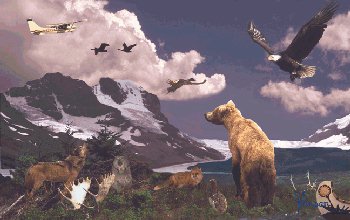Lower elevations are generally forested by White Spruce and Subalpine Fir. A pattern apparent in many valleys is intermittent-to-closed forest cover of White Spruce with variable amounts of Pine and Aspen in the valley bottoms and on lower slopes. The best forest growth is associated with White Spruce on fine-textured moist soil near wetlands and water. Subalpine Fir dominates higher up, especially on northern and eastern slopes, where it often forms nearly pure stands. Black Spruce, Lodgepole Pine, and Trembling Aspen are relatively minor species, although locally abundant. Wildfires are not as common as in adjacent ecozones to the east although the occasional stand of Lodgepole Pine, which grows in the aftermath of fires, is not unknown.
Upper elevations near treelines are dominated by deciduous shrubs, mainly scrub birch and willows. Tree species are in stunted or “krummholz” form. The most common krummholz species are Subalpine Fir, Englemann Spruce, White Spruce, Mountain Hemlock, and Whitebark Pine. Groves of stunted aspen and Balsam Fir occur at timberlines, usually on southern slopes. Alpine vegetation consists of shrubs, herbs, moss and lichen, with much of this area totally lacking in vegetation and dominated by rock, ice and snow.
